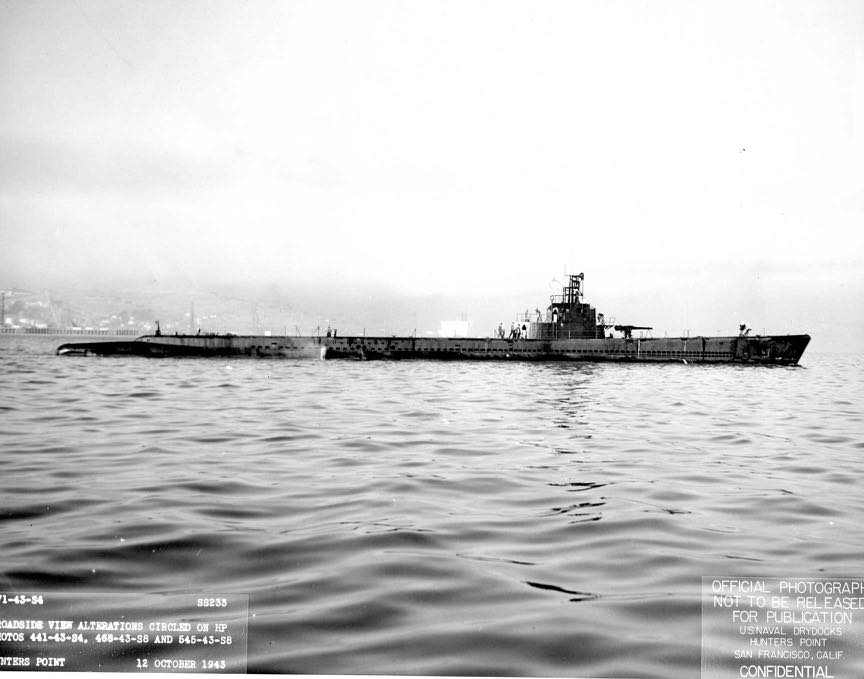Herring SS-233

Herring
A very valuable food fish which reaches a length of about 1 foot and is extraordinarily abundant in the temperate and colder parts of the North Atlantic.
( SS-233: dp. 1,526; 1. 311'8"; b. 27'4"; dr. 15'3"; s. 20 k.;
cpl. 60; a. 10 21" tt., 1 3"; cl. Drum)
Herring(SS-233) was launched 15 January 1942 by the Portsmouth Naval Shipyard, Portsmouth, N.II.; sponsored by Mrs. Ray Spear, wife of Rear Admiral Ray
Spear, Chief of the Bureau of Supplies and Accounts; and commissioned 4 May 1942, Lt. Comdr. Raymond W. Johnson in command.
After shakedown, the new submarine was one of five sent to the Mediterranean to take station off the North African coast prior to Operation Torch, the invasion of North Africa. Reaching her position off Casablanca 5 November, Herring remained there spotting but not attacking several targets on the morning or 8 November as the invasion was launched, the patient sub had her chance, sinking the 5,700 ton cargo ship Ville de Havre. Herring returned to Roseneath, Scotland, 25 November and departed for her second war patrol 16 December, on which targets were scarce. On her third patrol Herring attacked and sank a marauding Nazi ~submarine, U-163 21 March 1943 The fourth war patrol, an antisubmarine sweep in Icelandic waters, and fifth patrol, which took her back to the States 26 July 1943, netted Herring no more kills.
Herring departed New London for the rich hunting grounds of the Pacific 9 August 1943. After intensive training at Pearl Harbor, she sailed 15 November 1943 on her sixth war patrol to join the ranks of the American submarines systematically decimating Japanese shipping and destroying the Japanese economy. She scored two kills, the 3,948-ton Hakozaki Maru on 14 December and the 4072-ton Nagoya Maru to celebrate New Years Day 1944. Herring's next patrol was a frustrating one as 24 March 1944 she stalked a large aircraft carrier but was detected and driven deep before she could attack.
Herring's eighth war patrol was to be both her most successful and her last. Topping off at Midway 21 May 1944, Herring headed for the Kurile Islands patrol urea. Ten days later she rendezvoused with Barb, and was never heard from or seen again. However, Japanese records prove that she sank two ships, Ishigaki and Hokuyo Maru, the night of 30-31 May Herring's exact manner of loss can be determined from these records also. Two more merchant ships, Hiburi Maru and Iwaki Maru, were sunk while at anchor in Massawa Island, Kuriles, the morning of 1 June 1944. In a counter-attack, enemy shore batteries scored two direct hits on-the submarine's conning tower and "bubbles covered an area about 5 meters wide, and heavy oil covered an area of approximately 15 miles" On her last patrol. Herring had sunk four Japanese ships for a total of 13,202 tons. In all she had sunk six maws totalling 19,959 tons, an Axis cargo ship, and a German U-boat.
Herring received five battle stars for her service in World War II.
